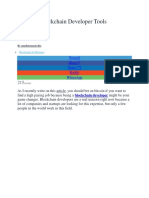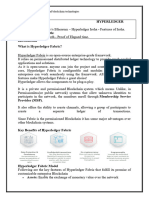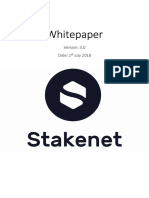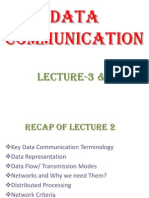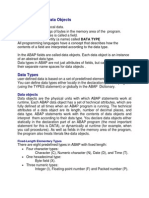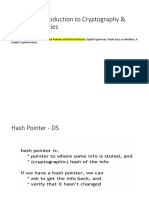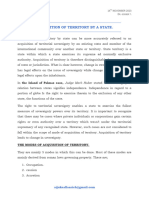0% found this document useful (0 votes)
99 views8 pagesBlockchain Notes.
This document provides an introduction and overview of blockchain technology. It discusses key features such as blockchain being a decentralized database that stores data in a unique chained structure. It also discusses how data is broadcast to a peer-to-peer network of nodes rather than a central server, and how the network collectively processes the data using a consensus algorithm. Different types of blockchains are also classified based on the type of data they can store, such as cryptocurrencies like Bitcoin that store transaction records, and programmable blockchains like Ethereum that can store and execute code.
Uploaded by
Hussein IbrahimCopyright
© © All Rights Reserved
We take content rights seriously. If you suspect this is your content, claim it here.
Available Formats
Download as DOCX, PDF, TXT or read online on Scribd
0% found this document useful (0 votes)
99 views8 pagesBlockchain Notes.
This document provides an introduction and overview of blockchain technology. It discusses key features such as blockchain being a decentralized database that stores data in a unique chained structure. It also discusses how data is broadcast to a peer-to-peer network of nodes rather than a central server, and how the network collectively processes the data using a consensus algorithm. Different types of blockchains are also classified based on the type of data they can store, such as cryptocurrencies like Bitcoin that store transaction records, and programmable blockchains like Ethereum that can store and execute code.
Uploaded by
Hussein IbrahimCopyright
© © All Rights Reserved
We take content rights seriously. If you suspect this is your content, claim it here.
Available Formats
Download as DOCX, PDF, TXT or read online on Scribd
/ 8


